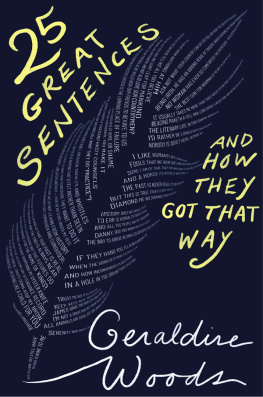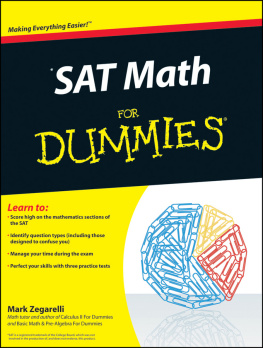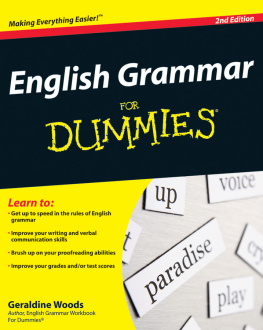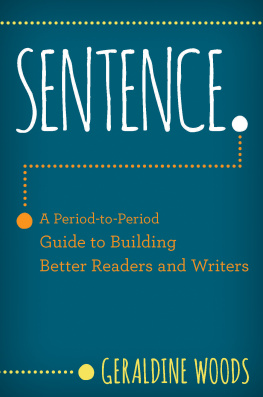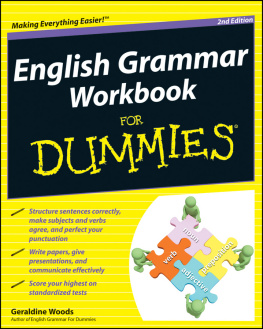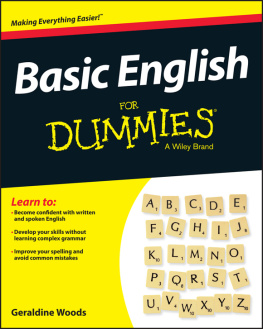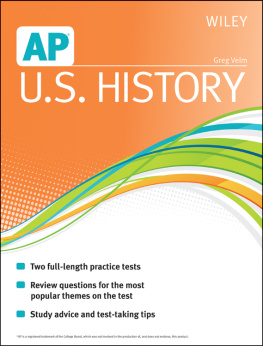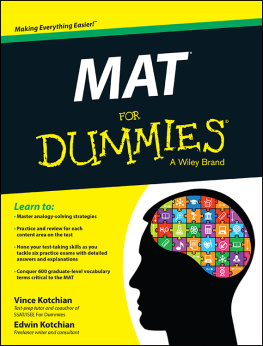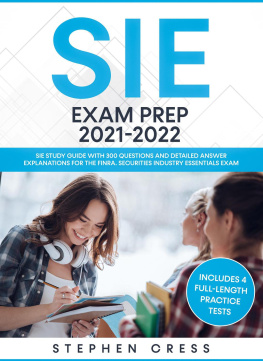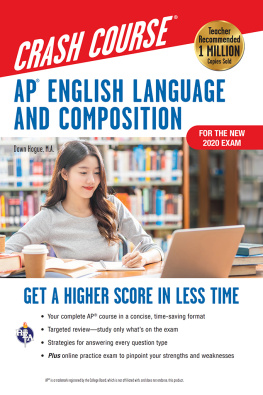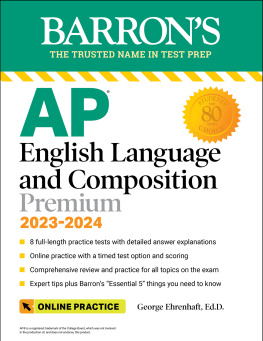

Wiley AP* English Language & Composition
Published by
John Wiley & Sons, Inc.
111 River St.
Hoboken, NJ 07030-5774
www.wiley.com
Copyright 2013 by John Wiley & Sons, Inc., Hoboken, New Jersey
No part of this publication may be reproduced, stored in a retrieval system or transmitted in any form or by any means, electronic, mechanical, photocopying, recording, scanning or otherwise, except as permitted under Sections 107 or 108 of the 1976 United States Copyright Act, without the prior written permission of the Publisher. Requests to the Publisher for permission should be addressed to the Permissions Department, John Wiley & Sons, Inc., 111 River Street, Hoboken, NJ 07030, (201) 748-6011, fax (201) 748-6008, or online at http://www.wiley.com/go/permissions .
Trademarks: Wiley and the Wiley logo are trademarks or registered trademarks of John Wiley & Sons, Inc. in the United States and other countries and may not be used without written permission. *AP is a registered trademark of the College Board, which was not involved in the production of, and does not endorse, this product. All other trademarks are the property of their respective owners. John Wiley & Sons, Inc., is not associated with any product or vendor mentioned in this book.
Limit of Liability/Disclaimer of Warranty: The publisher and the author make no representations or warranties with respect to the accuracy or completeness of the contents of this work and specifically disclaim all warranties, including without limitation warranties of fitness for a particular purpose. No warranty may be created or extended by sales or promotional materials. The advice and strategies contained herein may not be suitable for every situation. This work is sold with the understanding that the publisher is not engaged in rendering legal, accounting, or other professional services. If professional assistance is required, the services of a competent professional person should be sought. Neither the publisher nor the author shall be liable for damages arising herefrom. The fact that an organization or Website is referred to in this work as a citation and/or a potential source of further information does not mean that the author or the publisher endorses the information the organization or Website may provide or recommendations it may make. Further, readers should be aware that Internet Websites listed in this work may have changed or disappeared between when this work was written and when it is read.
For general information on our other products and services, please contact our Business Development Department in the U.S. at 317-572-3205.
Library of Congress Control Number: 2012952212
ISBN 978-1-118-49017-4 (pbk); ISBN 978-1-118-49003-7 (ebk); ISBN 978-1-118-49018-1 (ebk); ISBN 978-1-118-49020-4 (ebk)
Manufactured in the United States of America
10 9 8 7 6 5 4 3 2 1
Publishers Acknowledgments
Project Editor: Tracy L. Barr
Executive Editor: Lindsay Sandman Lefevere
Technical Reviewer: Elizabeth Brown
Sr. Project Coordinator: Kristie Rees
Cover Photo: aleksandar velasevic / iStockphoto.com
About the Author
Geraldine Woods has taught and tutored every level of English from 5th grade through AP for the past three decades. Shes the author of more than 50 books, many published by Wiley: English Grammar For Dummies, English Grammar Workbook For Dummies, Research Papers For Dummies, College Admissions Essays For Dummies, SAT For Dummies, and Punctuation: Simplified and Applied.
Authors Acknowledgements
Many talented people helped me with this book: Robin Aufses, Ben Casnocha, Sam Goodman, Karen Ellen Johnson, Tom Katzenbach, Christopher Witcombe, and Don Yates. I owe a debt of gratitude to them all. Id also like to thank Tracy Barr and Lindsay Lefevere of Wiley, as well as my technical reviewer, Elizabeth Brown of William Henry Harrison High School in West Lafayette, Indiana.
I
Introduction to the AP Exam and the AP Course
An Overview of the Exam

Exam format and content
Test scores and score reports
Ways to prepare before the exam date
Things to do before, during, and after the exam
P eople who favor traditional education usually want schools to focus on the three Rs reading, riting, and rithmetic. Traditionalists, therefore, love the AP English Language and Composition exam because it covers two-thirds of these basic areas: reading and writing . This exam, as well as the course that may be attached to it, concentrates on your skills as a writer and as a reader of other peoples writing.
In this chapter, I show you typical AP English Language and Composition questions and tell you what you need to know about scoring, timing, and guessing. I also cover how to find out when and where the test is held, what it costs, how scores are reported, and other practical information.
WHAT TO EXPECT FROM THE AP ENGLISH LANGUAGE AND COMPOSITION EXAM
The AP English Language and Composition exam is probably easier than many of the tests youve already taken, although it looks a bit intimidating. (It comes in a plastic, shrink-wrapped package with multicolored booklets and instructions.) The test boils down to two parts:
Multiple Choice: You have one hour to answer approximately 55 questions (the number varies a bit from year to year) based on five or six reading passages. Each question is followed by five possible answers lettered AE. You bubble your answers with a number two pencil onto an answer sheet.
Free Response: This section throws three writing assignments at you, all essays, tucked into a little green booklet. You get a 15-minute reading period during which you can check out all the questions, read the passages supplied, and take notes in the question booklet. Then the test proctor lets you open the pink answer booklet and write for two hours approximately 40 minutes per essay.
The test itself takes 3 hours and 15 minutes. As you plan for test day, add a 10-minute break between the multiple-choice and free-response sections and about 45 minutes for getting settled and bubbling registration information on the answer sheet a little less if your school holds preregistration sessions. (More about registration and the logistics of test day appears in Practical Considerations later in this chapter.)
A moving target
Many high school English teachers see the AP English Language and Composition exam as a moving target. The test has changed several times in the last few years, and it may change again in the future. Why hop around so much? The AP test writers are likely responding to what todays college teachers want to see in a well-prepared student writer. The AP English Language and Composition course is roughly the equivalent of Freshman Comp or Composition 101, and the exam is designed to show whether youve learned enough to get credit in that college class. More than in the past, such courses now stress the use of sources and argument. So its not surprising that in 2007 the College Board added a synthesis essay to determine whether students can handle research material.
Other changes in the test are detectable only if you read a few decades worth of AP questions. An extended survey reveals, for example, that paired-passage essays havent shown up for a while. They may be gone for good, or, as some AP teachers believe, theyre due for a comeback. Passages drawn from the web are on the upswing, and specialized vocabulary to describe writing style seems to be increasingly important. Not to worry: This book covers all the bases, so youll be ready no matter what shows up on test day.


